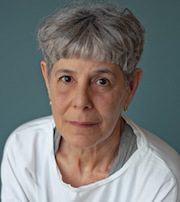Is there ever a good reason to write a memoir and call it a novel? With Cambridge, Susanna Kaysen appears to do exactly that. Normally I’d just go with it. It shouldn’t matter whether or not the content happens to match up with what I already know about the author’s life. Writing a novel instead of a memoir might be the writer’s way of disguising painful or embarrassing events behind a veil of fiction. Kaysen has already written two memoirs. In Girl, Interrupted, she looks back at her 18-month stint in a mental institution. The Camera My Mother Gave Me is all about her vagina. I braced myself for Kaysen to get even more intimate and strange in Cambridge, her first novel since 1990. But the book is a mostly pleasant, sometimes lonely slideshow of the twilight years of one girl’s childhood.
Cambridge is organized as a series of memories in chronological order. It starts when the narrator, Susanna, is seven and living in England with her family, and ends around the time she gets her first period. During those years, she never settles into herself or feels at home anywhere. Her childhood is not the miserable one we expect from so many memoirs or novels-just-like-memoirs, but it’s not necessarily happy, either. Her young life is a hollow of loneliness and mediocrity in Cambridge, Massachusetts, a town where everyone is striving to outdo each other. “In England the pressure had been to conform. Here the pressure was to excel,” Susanna says of her hometown. The problem is, Susanna has no interest in excelling. She dislikes school and doesn’t feel passionate about any subject in particular.

Susanna wishes she could experience life unexamined. “I didn’t want to bother learning things I’d decided (on nearly no evidence) were boring, and if there were things I wanted to know about, I couldn’t stand not knowing about them already,” she writes. Or, as she puts it: “Things were better when they were unexplained.” She resists the idea that she should be always striving to learn and develop into a responsible adult. At the same time, she doesn’t view childhood as a time of carefree abandonment. Childhood is the place where you wait, impatiently, to grow into the person you’re meant to be.
What Cambridge lacks in narrative tension it makes up for with its careful attention to scene-setting. Kaysen writes interiors that belong on the set of a Wes Anderson movie: “A large fringed Oriental carpet draped over the piano made an under-the-piano world where two children could easily fit even though they had to share it with a slide projector, ten boxes of slides, several other Oriental carpets rolled up, and a few folded folding chairs.” Serious children play quietly as their parents lead their own tortured lives. The Indian music teacher shows young Susanna how to listen to—and really understand—Brahms. The piano has its own “glassed-in annex” filled with geraniums and a gigantic rubber plant. A love affair between the Swedish nanny and music teacher happens dimly in the background, outside of young Susanna’s awareness, and then flickers out. The family sits down to dinners of corn on the cob, coq au vin, and sliced tomatoes, with desserts of cardamom cake or poached pears.
Where we grow up makes us who we are, but sometimes we don’t realize it until we leave. Each new place brings a barely perceptible change that Susanna can feel but hardly understand. All those tiny changes can add up to big disasters. Susanna understands and fears this. If nothing ever changes, nothing can ever go too terribly wrong. “As we walked down the hundred stairs I thought about how I didn’t like life. Life was always something new. I didn’t like something new. I liked the same thing over and over,” she muses. Typically novels demonstrate how a character grows, changes, and adapts to new adventures. Cambridge pushes against this notion. With change comes loss. Childhood happens only once. It might be great or it might be awful or it might be ordinary, but once we reach adulthood, it’s gone.




